1. Where to Stay
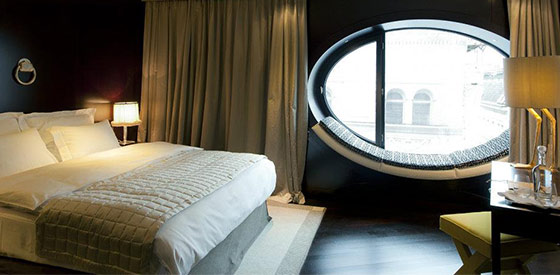
Live like a local at any of the three city lofts from Urbanauts (from $165), a hospitality concept launched in 2012 in Vienna’s gallery-packed fourth district. The model veers away from the typical hotel setup, where everything you need is inside one building. Instead, you’ll get two bikes at check-in, plus a paper neighborhood guide to acquaint you with your new surroundings, including breakfast spots and the nearest hammam. All three properties are located within walking distance of the neighborhood’s highlights, like the historic Belvedere palace complex, and are outfitted with graphic bath tiles from Italy, bath products from Saint Charles Pharmacy (one of Urbanauts’s “fellows,” revitalizing culture around town), and pared-down furniture the founders designed in partnership with local carpenters.
Stay in the thick of things at ecofriendly Hotel Topazz (from $260), a couple of blocks away from the iconic St. Stephen’s Cathedral in Vienna’s Old Town. The 33-room boutique’s porthole-covered façade fronts sleek yet eccentric rooms where dark-wood paneling accents patterned wallpaper and fur-trimmed bedside lamps. Ask for any of the rooms whose number ends with a three (23 to 83); these have two of those porthole windows with curved, cushioned seats offering an ideal people-watching perch over busy Rotenturmstraße. Stop by the ground-floor salon in the late afternoon—free snacks, like apple strudel, are offered throughout the day.
Seek refuge at the Guesthouse (from $235), a homey new spot in the busy first district, across a small square from the renowned Albertina museum. Designed by Brit Terence Conran, the spacious rooms (most with walk-in closets) feel like free-standing, contemporary apartments, with colorful area rugs, sculptural leather armchairs, and massive bay windows. Start the day with a slice of poppy-seed challah ($1.25) or a croissant ($2.30) at the hotel’s on-site brasserie and bakery, where the fresh-baked breads come courtesy of award-winning Gragger & Cie, and be sure to order a cup of mélange ($6), Austrians’ take on the cappuccino, featuring the Guesthouse roast, exclusively developed for the hotel by old-school Viennese roaster Naber.
2. Where to Eat
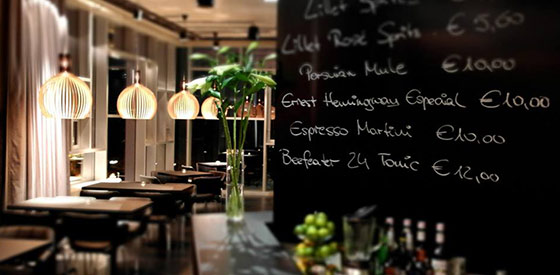
Chow down with co-eds at Campus WU, the site of Vienna University of Economics and Business Administration. Great architecture abounds thanks to a €492 million development plan (featuring buildings by names like Zaha Hadid), and dining options are anything but typical collegiate fare. At Comida y Luz, a sixth-floor restaurant in the Executive Academy building, a floor-to-ceiling window looks out over the Prater (the second district’s massive park), and the weekly changing menu is all about imaginative international combinations; recently, jerk-marinated chicken drumsticks were paired with lumpiang sariwa, a Filipino fresh-vegetable roll ($13). For a lighter meal, stop by bright and quaint Scandinavian spot Nykke for open-faced smørrebrød sandwiches, organic fair-trade lattes with foam art, and—in an especially Northern turn—a design-your-own-hot-dog station. Meet friends at Das Campus, an industrial-chic pub filled with artfully distressed leather-covered chairs and long wooden tables; pitchers of beers like Schneider Weisse ($14) and impossibly thin-crusted pizzas with seasonal toppings like fresh figs, crème fraiche, prosciutto, and speck ($12) are made for sharing.
Bring a hearty appetite to farm-to-table hot spot Labstelle, which has gained a reputation as the weekend place-to-be since opening in the first district in 2013. Ask for a table on the outdoor patio—on a sunny Saturday, the plant-filled space is the perfect place to while away a couple of hours digging into the Flying Frühstück ($32.50) brunch, for which the kitchen sends out a litany of tasting plates, like ham, goat cheese, and sauerkraut salad; foie gras mousse topped with elderberry jam; and risotto with cream cheese. The restaurant’s “food with no frills” philosophy is especially apparent at dinner: Go for the rustic yet elegant offerings like radish, cucumber, and celery soup with smoked trout ($7) and organic Styrian hen ($27).
Splurge on a multicourse dinner ($110 for four courses) at Graz-born chef Konstantin Filippou’s eponymous Michelin-starred restaurant in the Inner Stadt. Prepare for an unusually intimate dining experience: The dining room seats only 35, and the kitchen is in full view. The minimalist décor—white-washed walls, light ash tables, plain black wall lamps—provides a clean backdrop to innovative plates blending Austrian and Mediterranean influences, a tribute to Filippou’s half-Greek heritage. Expect atypical pairings, like snail ragout prepared with beetroot, marinated beef with oysters and caviar, and duck-liver parfait with pear, port wine, and chervil.
3. What to Do
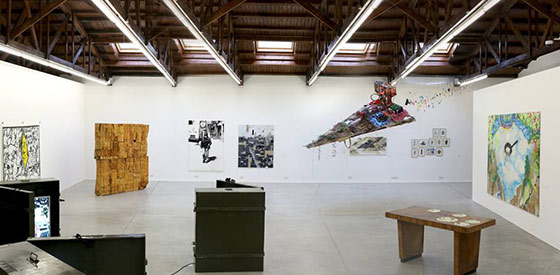
Stroll amid Vienna’s newest contemporary-art galleries in the recently revived Ankerbrotfabrik. Previously the largest bread factory in Europe, today it’s packed with art spaces. Established local dealer Ernst Hilger Gallery’s brand-new offshoot BROTKunsthalle will stage the street art bonanza Cans, Cash & Candy for the second year in a row (through September 7), featuring works by the likes of London-based graphic artist Lakwena Maciver and French stencil master Epsylonpoint. Elsewhere in the building, photography-centric Galerie OstLicht has David LaChapelle’s controversial Once in the Garden show until September 14. For a look at Vienna’s own up-and-comers, visit Loft 8 Kunstraum, which specializes in young Austrian artists, and Vor Anker, which gives studio space to artists for two-month periods, culminating in shows of their work.
Discover (and then buy from) Vienna’s homegrown design talent. Start at Das Möbel, a three-floor home-décor mecca stocking items by young Austrian creatives. Pick up sculptural wood rocking chairs ($710) by Tina Lehner, mixed-media cork and porcelain vases ($190) from Breaded Escalope, and perforated glass lamps ($285) from Feinedinge. Then head to designer Andreas Eberharter’s AND_i boutique across town in the fourth district, perusing his avant-garde collection of accessories like star-shaped eye patches (Alexander Skarsgård wore the plain aluminum version in Lady Gaga’s music video for “Paparazzi”). Nearby, check out the brick-and-mortar location of up-and-coming Vienna-based label Elfenkleid, known for easy womenswear, like sleek, belted rompers and breezy cape-back day dresses (both $405).
Experience Vienna’s burgeoning nightlife scene, which is starting to give Europe’s more renowned party cities a run for their money (thanks in part to a later curfew for clubs—6 a.m., instead of 4 a.m.). Start your night at Roberto American Bar. Roberto Pavlovic, one of the city’s most beloved bartenders, opened his own place in January after years at another Viennese drinking institution, Loos Bar. Sip a Bobe’s Special ($12)—a potent gin-based cocktail with Peachtree liqueur, made tangy with lime and pineapple juice—beneath a massive chandelier made of 80,000 freshwater pearls. Then bounce till the wee hours at Das Werk’s industrial new location, occupying five arches under the Vienna metropolitan railway in Spittelau. A favorite of underground electro fiends, it’s also a must-stop for its after-hours ragers featuring European DJs and experimental music producers like Smacs & Patrick Kong and Patrick Krieger.
4. Insider’s Tip
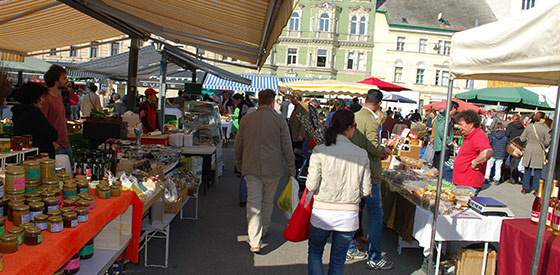
The Naschmarkt is still the biggest and busiest market in Vienna, but the second district’s Karmelitermarkt is gaining ground. Located in the former Jewish quarter, in a small square off Leopoldsgasse surrounded by Baroque townhouses, the Karmelitermarkt is open everyday but especially bustling on Saturdays, when producers from nearby farms bring organic offerings. Check out Kaas am Markt, a market stalwart that stocks cheeses and meats from small Austrian producers, and on Saturdays, Slow Food Corner for a massive inventory of wood-oven-baked breads, Alpine salmon, and raw-milk products, most of which come from Austria (look for the stall’s yellow awning).
5. Oddball Day
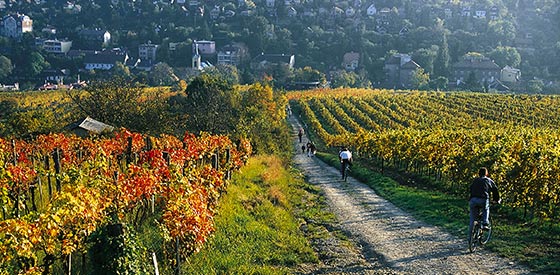
Take a break from Vienna’s urban side and experience the outdoors without leaving the city limits. Start your day with a hearty breakfast sandwich packed with scrambled eggs, bacon, ham, cheese, avocado, and spicy habanero mayonnaise ($14) at Motto am Fluss, a two-floor restaurant serving contemporary international dishes right on one of the Danube canals in the city center. Sit outside and watch the ferries cruising by on their way to Bratislava and other local ports. At 9 a.m., catch the National Park boat at Franz-Josefs Quay, headed down the Danube to the Lobau, just southeast of the city. Nicknamed “the Jungle” by locals, the Viennese portion of national park Donau-Auen (one of Central Europe’s last remaining wetlands) is a popular destination for hikes, bike rides, and, for the adventurous, nude sunbathing. Embark on a one-hour guided walk, looking out for birds—the Lobau is home to 100 species. After reboarding the boat, you’ll be deposited back in the middle of the city at around 2 p.m. Fuel up at one of the rustic communal tables at nose-to-tail temple Hollmann Beletage; try the house-specialty Hollmann stockpot ($15), a filling stew of beef, marrow, and vegetables in a clear broth. Then head to Leopoldstadt by the Praterstern, one of Vienna’s railway stations, to meet with a guide from Pedal Power for an evening bike ride to the city’s winemaking northern woods. The three-hour cycling tour (from May to September on Fridays and Saturdays, starting at 4 p.m.) takes you through the rolling hills of the Wienerwald, stopping at two vineyards for wine tastings. Your guide will opt for at least one where it’s possible to sit outside while sipping Austria’s most popular white-wine varietal, the sometimes effervescent and always aromatic Gewürztraminer. At around 7 p.m., your guide will hand you tram tickets for the return leg to the city center, but stay at the Wienerwald for an atmospheric dinner at Mayer am Pfarrplatz, a traditional Austrian wine tavern where Beethoven once resided for a short time. You’ve worked up an appetite, so order a hearty, traditional Austrian dinner—perfectly crisped wienerschnitzel ($27), paired with another glass of Gewürztraminer sipped under grapevine trellises in the moonlight.
6. Links
The massive Viennese blog vienna-unwrapped.com is great for restaurant and hotel reviews, but experiential coverage (like a walking tour of modern-art galleries or where to find the best rooftop views) is equally thorough.
International shopping guide shopikon.com was born in the Austrian capital and offers an exhaustive look at the city’s retail scene.
Vienna for Beginners, an oft-updated photo-driven blog about the city, covers everything from restaurants to local dogs spotted around town.